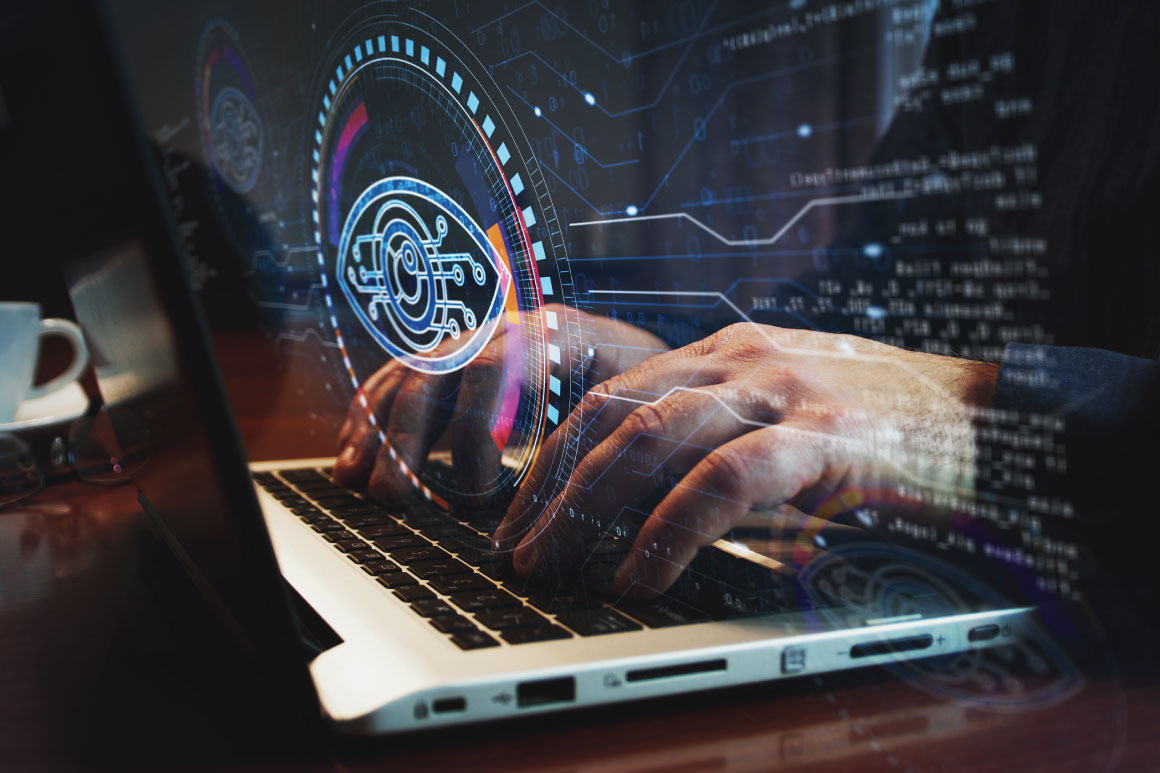
To tackle the increasingly complex threats posed by AI, enterprises need to combine technical measures, human resources, management mechanisms, and legal regulations to establish a comprehensive defense system that ensures business security and stability.
Cutting-edge Anti-fraud Technology
Utilizing advanced technological measures to build a solid defense system is the first step in addressing AI risks.
Advanced Anti-fraud Tools
. Using technologies such as deep learning, natural language processing, and machine learning, enterprises can monitor and analyze transaction data and behavior patterns in real-time to identify anomalies and potential fraudulent activities. For example, behavioral biometrics can differentiate between legitimate users and cybercriminals by monitoring user behavior traits.

Dingxiang Dinsight's real-time risk control engine helps enterprises conduct risk assessments, anti-fraud analysis, and real-time monitoring, improving the efficiency and accuracy of risk control. Dinsight’s daily risk control strategy processing speed averages under 100 milliseconds, supporting the configurability and accumulation of multi-source data. Based on mature metrics, strategies, and models, along with deep learning technology, it enables self-monitoring and iterative mechanisms for risk control performance. Paired with the Xintell intelligent model platform, it can automatically optimize security strategies for known risks, mining potential risks from risk logs and data, and configuring risk control strategies for different scenarios with a single click. Using associative networks and deep learning, it standardizes complex data processing, mining, and machine learning processes, offering a one-stop modeling service from data processing to model deployment.
Multi-layered Identity Verification
. Enterprises should adopt multi-factor authentication, biometrics, and Device Fingerprinting technology to enhance the security of user verification. Biometrics combined with device information and behavioral data can provide more precise identity verification, reducing the risk of account hacking or identity theft.
Dingxiang Device Fingerprinting identifies legitimate users and potential fraud by recording and comparing device fingerprints. This technology uniquely identifies each device, detecting virtual machines, proxy servers, emulators, and other maliciously manipulated devices. It analyzes if a device has abnormal behavior, such as multi-account login, frequent IP address changes, or frequent changes in device attributes, helping track and identify fraudulent activities.
Dingxiang atbCAPTCHA quickly and accurately differentiates between humans and machines, precisely identifying fraud behaviors, monitoring, and intercepting anomalies in real-time. atbCAPTCHA, based on AIGC technology, can prevent brute-force attacks, automated attacks, and phishing threats posed by AI. It effectively prevents unauthorized access, account theft, and malicious operations, thereby safeguarding system stability. It integrates 13 verification methods and multiple defense strategies, covering 4,380 risk strategies, 112 types of risk intelligence, across 24 industries and 118 types of risks. Its control accuracy reaches 99.9%, swiftly converting from risk to intelligence. It also supports seamless user authentication without security compromise, with real-time threat handling reduced to under 60 seconds, further improving account login convenience and efficiency, and ensuring the security of user accounts and information.
Real-time Threat Intelligence Sharing
. Through threat intelligence-sharing platforms across various industries, institutions and enterprises can collaboratively analyze cyber threats and preemptively prevent potential attacks. Meanwhile, continuous AI model optimization and real-time updates enable rapid responses to new risks.
Professional Anti-fraud Teams
Although technology is at the core of addressing AI risks, it also requires proper human resource allocation and related training. Enterprises need to cultivate and recruit more professionals with skills in AI, cybersecurity, and other areas. Establishing dedicated anti-fraud teams that include security experts, AI engineers, and business risk managers helps build a multidisciplinary collaboration mechanism, ensuring full capability to respond to complex attacks.
 Additionally, regular internal training is essential to raise overall employee risk awareness, particularly in recognizing AI technologies and cybercrime. Employees, as the first line of defense, play a critical role in identifying suspicious activities, which is key to preventing data breaches and mitigating internal risks.
Additionally, regular internal training is essential to raise overall employee risk awareness, particularly in recognizing AI technologies and cybercrime. Employees, as the first line of defense, play a critical role in identifying suspicious activities, which is key to preventing data breaches and mitigating internal risks.
A note on applying for phone permissions in compliance guidelines for special business scenarios should be added.
Scientific Security Management Mechanism
The optimization of management mechanisms should be based on the organization’s overall security architecture, ensuring coordination and efficiency between departments. Enterprises should establish comprehensive AI risk assessment systems, regularly evaluating and adjusting potential AI threats. Standardized emergency response processes should be created for possible AI attack scenarios to ensure swift reactions when issues arise.
Business risk management requires close collaboration with departments like legal, compliance, risk management, and operations. A cross-departmental collaboration mechanism ensures that every department can respond quickly to AI risks, forming a cohesive defense.
Enterprises must also strengthen customer data protection measures by establishing strict data access control mechanisms, ensuring that data is encrypted throughout its collection, storage, and use. Furthermore, internal audits and regulatory oversight should be implemented to ensure that data usage complies with relevant legal requirements and privacy standards.
Legal Safeguards
Effectively addressing AI-related risks requires legal protection. Governments and regulatory bodies play a crucial role in combating AI crimes, and enterprises must ensure their operations comply with regulatory requirements while actively participating in the development of industry standards.
Businesses must adhere to relevant laws and regulations in their respective countries and regions, especially regarding data privacy, AI usage, and crime prevention. Strengthening interaction with regulatory authorities is also essential to ensure that the implementation of new AI technologies does not violate legal regulations.
Given the complexity and rapid evolution of AI applications, companies should actively engage in industry organizations or standardization efforts to promote the standardization of AI technologies in the financial sector. This ensures clear guidelines and regulations during the implementation and application of these technologies.
The cross-border nature of cybercrime requires legal coordination and cooperation between nations. In combating AI-related crimes, enterprises must collaborate closely with law enforcement agencies across different countries to effectively tackle cross-border crimes and money laundering activities.


